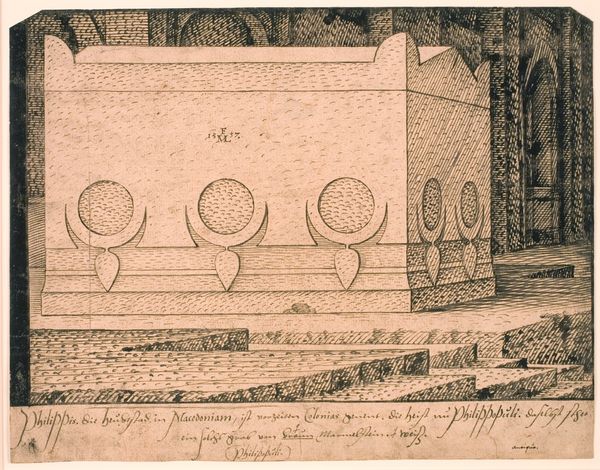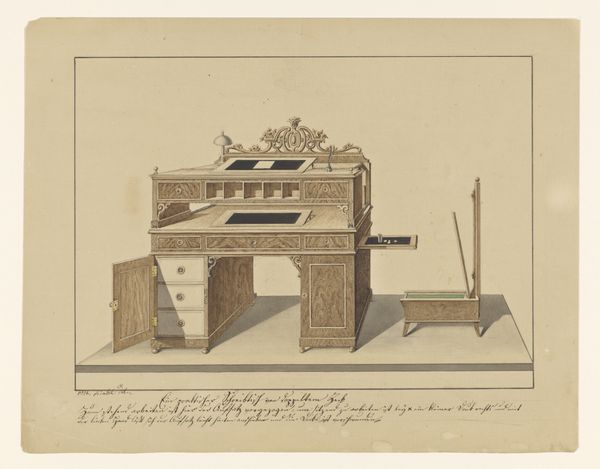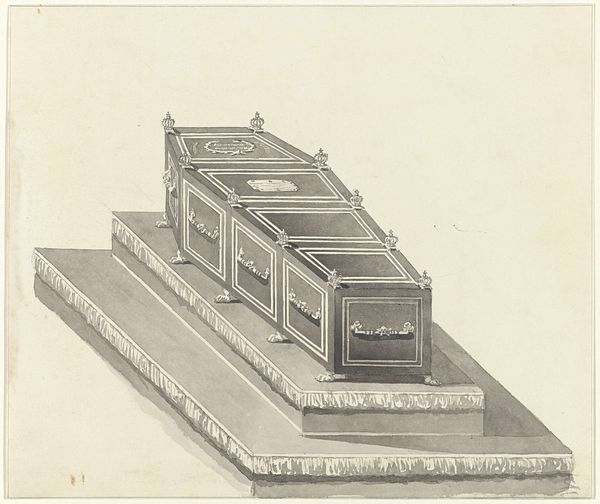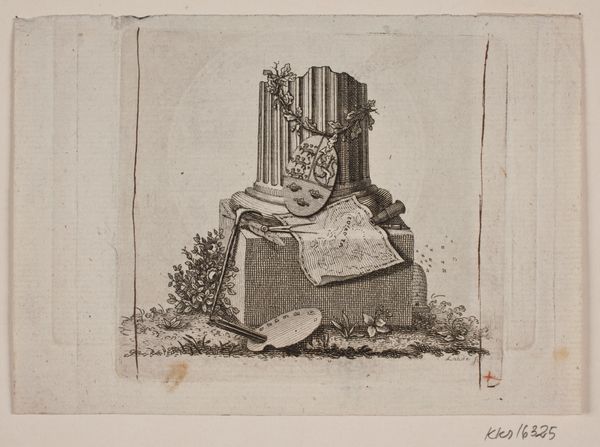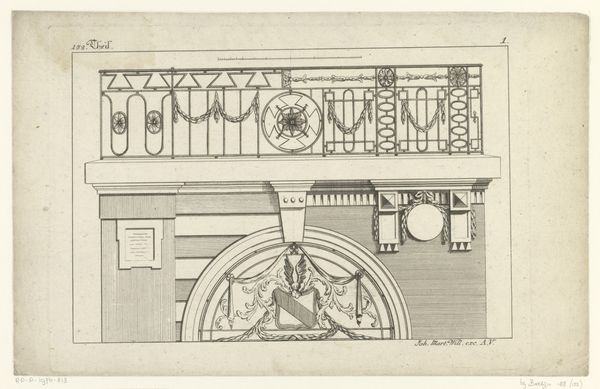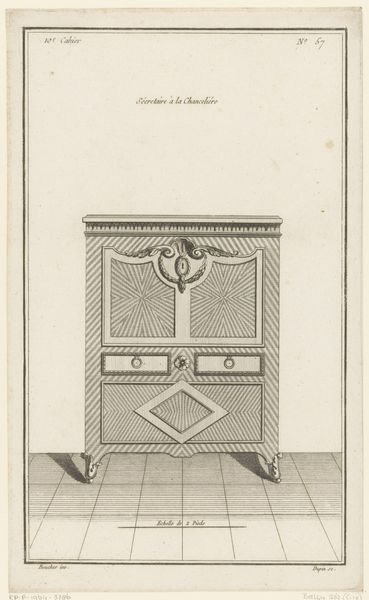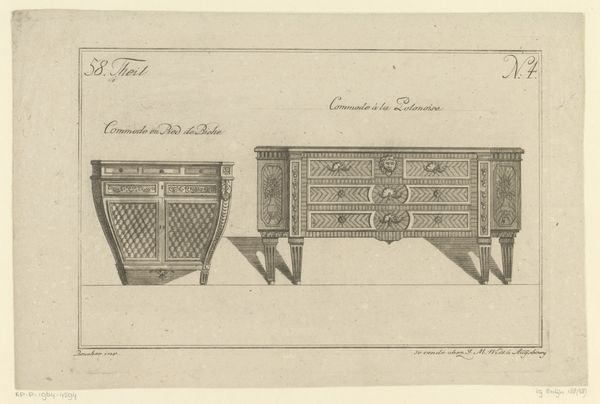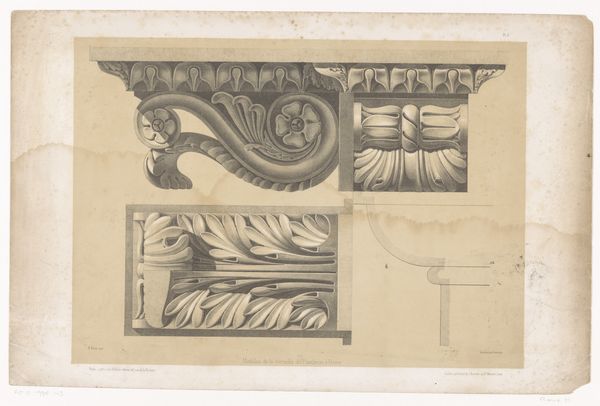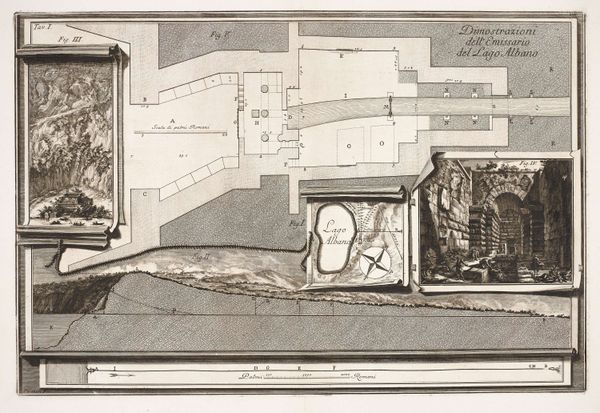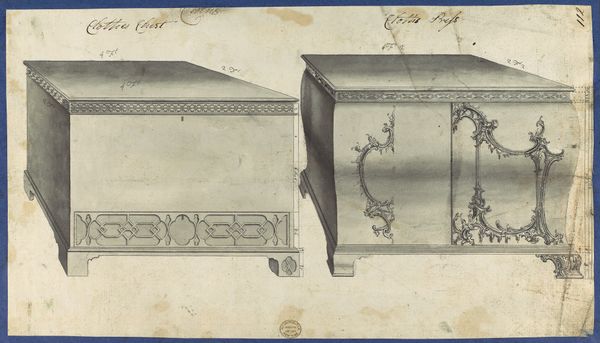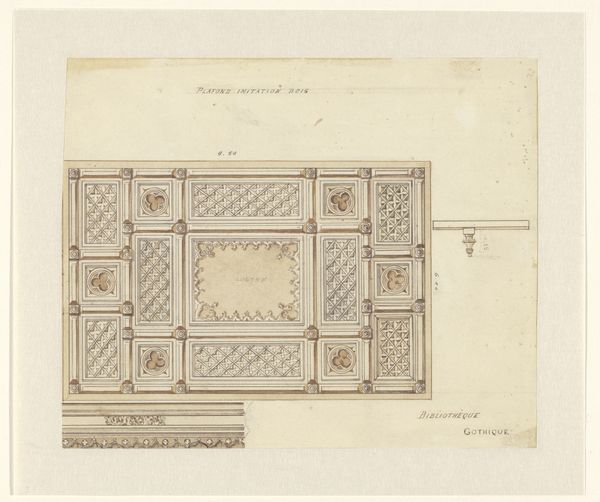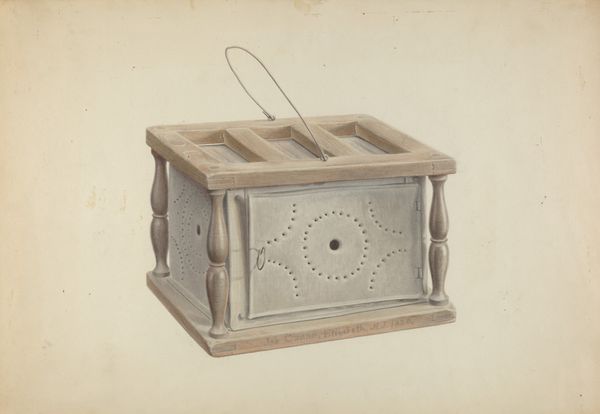
drawing, print, etching
#
drawing
# print
#
etching
#
landscape
#
etching
#
mannerism
#
figuration
#
history-painting
Dimensions: 258 mm (height) x 317 mm (width) (bladmaal)
Curator: Melchior Lorck created this etching, titled "A Sarcophagus," sometime between 1560 and 1564. It currently resides in the collection of the SMK, Statens Museum for Kunst. Editor: It feels so… austere, almost like an architectural diagram of grief rather than grief itself. The meticulous hatching gives it an almost cold quality, despite the surrounding landscape. Curator: Indeed. Lorck often explored the intersection of architecture, allegory, and history. Sarcophagi, of course, aren’t just boxes for the dead, they are loaded with cultural symbolism about status, remembrance, and the afterlife. The formal, almost geometric precision would speak to Renaissance ideals, yet the landscape lends it an aura of decay, doesn’t it? Editor: Absolutely, the landscape setting—the way the tree sort of leans over it—creates this subtle tension. It is not presented in isolation but within a space both supportive and encroaching, and that is where I see the interesting conflict playing out. Is nature nurturing or reclaiming? Curator: That ambiguity is powerful. The circle motif, repeated on the side, could signify cyclical existence, eternal return, an unbroken line. But then there’s all the very calculated, very straight lines that are obviously human-made and create boundaries around what can never truly be contained. Editor: The more I look, the more those rigidly defined lines contrast with the vulnerability implicit in the surrounding landscape. Like a valiant but ultimately futile attempt to contain the vastness of death with reason. Curator: Yes, the etching almost acts as a memento mori itself. Something carefully rendered, but hinting at the ephemeral nature of human existence and all our endeavors to give our life, or death, meaning. Editor: I like that. A thoughtful depiction, not just of an object but of an attempt at meaning-making within the grand narrative of time.
Comments
No comments
Be the first to comment and join the conversation on the ultimate creative platform.
